For most fishing guides and charter captains, seasonality isn’t just a factor—it’s a defining part of the business. Whether you’re running full-throttle for a few summer months in Alaska or grinding through the winter-to-spring shifts in Florida, the ebb and flow of bookings is inevitable. In some places, off-season means ice on the water and zero trips on the books. In others, things slow down as seasonal species move out or tourism traffic drops off.
And even for year-round guides, there are layers to it: a hot tarpon bite might last three months, but spring break or holiday tourism might bring an entirely different kind of client surge. The overlap between what’s biting and when people travel plays a huge role in shaping your calendar—and your cash flow.
In this article, we’ll dig into how different types of seasonal rhythms affect charter businesses, explore ways to make the most of your busiest stretches, and lay out smart strategies for keeping the wheels turning during the slower months. We’ll also talk about when to start ramping up your marketing, so you’re not scrambling to catch up when the season is already underway.
Defining Seasonality for Your Business
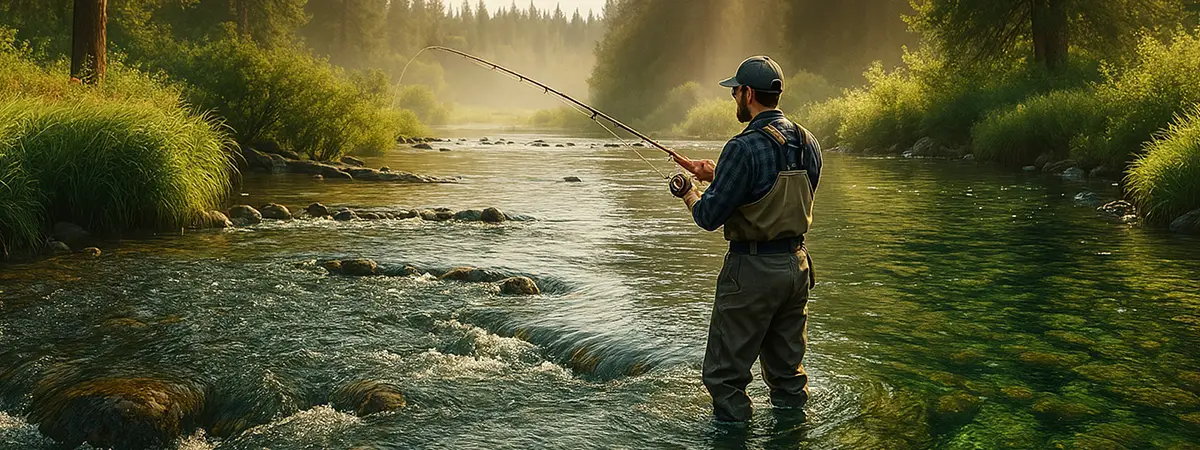
Every fishery has its own rhythm, and the definition of “seasonal” varies widely across the charter world. For some, it’s as clear-cut as a summer calendar—guides in places like Alaska or the Great Lakes often have a narrow, high-pressure window to run trips before weather or ice shuts things down. In those cases, the season is short, intense, and essential. There’s no fishing in the off-season, so making the bulk of your income during peak months is non-negotiable.
For others, especially those in warmer coastal areas, it’s less about whether fishing is possible and more about when it’s profitable. That’s where seasonality often shows up in two overlapping ways:
- Species-based spikes – Like tarpon season in the Keys, fall redfish in the marsh, or kingfish runs along the beach. These short windows can be intense and competitive, drawing experienced anglers who plan their trips far in advance.
- Tourism-driven demand – Spring break, snowbird season, summer vacation, holiday weekends. These periods bring an influx of families, casual anglers, and vacationers looking to get on the water—regardless of what’s biting.
Understanding how these layers stack up in your own business is critical. Do you have a steady stream of residents booking all year, or is your phone only ringing when the snowbirds show up? Are your best months driven by fish migrations or school vacations?
And beyond the fishing itself, it’s important to distinguish between your fishing season and your booking season. Often, the booking window opens weeks or months ahead of your peak fishing days. The more in tune you are with both, the better you can plan your marketing and outreach.
Stretching the Edges of the Season (When Possible)
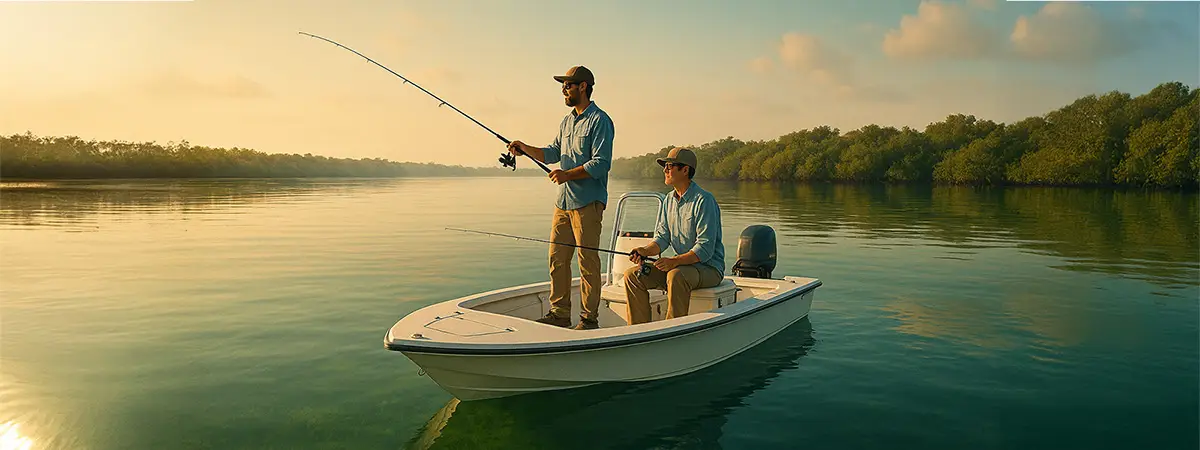
For guides in more temperate climates—or in fisheries that hold year-round opportunity—there’s often a chance to pick up extra bookings just outside your traditional “peak.” These shoulder seasons might not have the same volume of clients or red-hot action, but they can still offer quality trips if you position them right.
Sometimes it’s simply a matter of adjusting expectations and messaging. Instead of pushing “trophy tarpon,” maybe it’s “light tackle fun for a variety of inshore species.” Instead of promising nonstop action, you can highlight quieter mornings, cooler temps, and less crowded ramps.
Here are a few ways to help stretch your season’s edges:
- Market overlooked months with intention – For example, October might not be peak season, but it could offer some of the best weather and less competition on the water.
- Highlight the upsides – Lower lodging rates, better availability, and more personalized trips can appeal to both hardcore anglers and casual visitors.
- Embrace what’s available – If redfish are consistent year-round but just don’t get the same hype as your spring cobia run, lean into that stability.
Stretching your season isn’t about forcing something that’s not there—it’s about seeing the value in the time that is available and helping clients do the same.
Diversifying with Off-Season Offerings
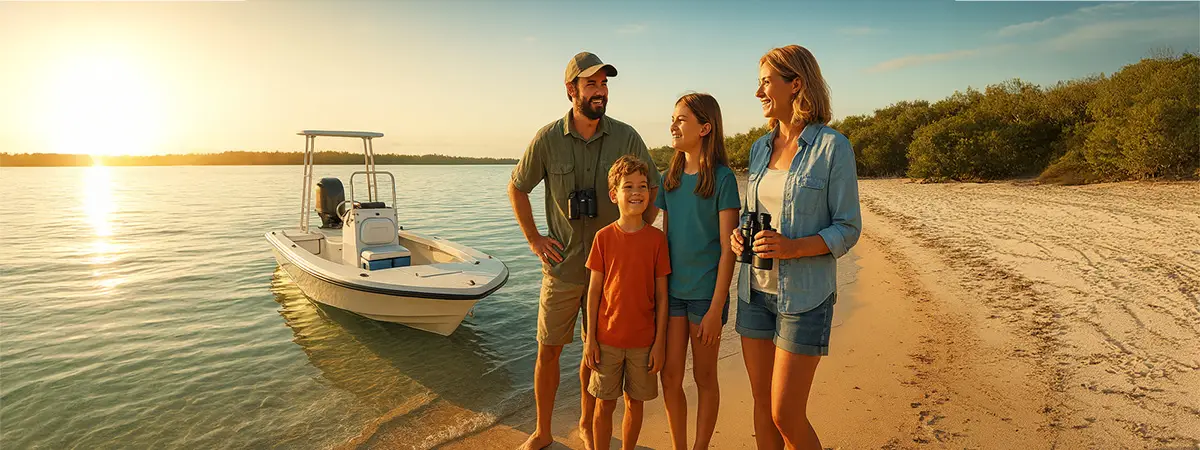
If your location and conditions allow you to stay on the water during slower periods, offering alternative experiences can help fill gaps in your calendar. These don’t have to be full-time pivots or replacements for your core fishing trips—they just need to appeal to a slightly different audience.
Not every visitor is a hardcore angler chasing a specific species. In the off-season, you might attract families, nature lovers, or locals just looking for a relaxing day on the water.
Here are a few ideas that have worked for guides in slower months:
- Eco tours & wildlife watching – Birding, dolphin watching, and scenic cruises are great for non-anglers and can be especially appealing to families or older clients.
- Sandbar, island, or sunset trips – Emphasize the experience over the catch. These trips don’t require a hot bite, just good weather and a good attitude.
- Night fishing – For areas with strong nighttime bites, this niche offering can attract serious anglers even when daytime conditions are slower.
- Photography outings – A unique option for clients who want golden-hour shots, wildlife views, or just a peaceful experience.
Even a few extra trips a month can help smooth out cash flow, keep your business top-of-mind, and give you more content to share—especially on social media when things are otherwise quiet.
When to Ramp Up Marketing for the Next Season

One of the biggest mistakes guides make is waiting until the season is already underway to start marketing. By then, you’re behind. Your competitors are already booking, your ad costs are higher, and your best clients may have made other plans.
Whether you’re seasonal or year-round, it pays—literally—to think ahead.
Here’s a breakdown of when and how to ramp things up:
- Start early – If your prime season is in June, your marketing should kick into gear by January or February at the latest. Destination anglers often plan 3–6 months in advance, especially for high-demand species like tarpon, salmon, or permit.
- Turn your Google Ads back on – If you paused or scaled them back after last season, reactivate them while people are still in planning mode. This can be as early as January, depending on your target audience and fishery.
- Refresh your website – Use the true off-season (late fall or winter) to update trip descriptions, swap in seasonal photography, and clean up your messaging. If your site needs a full rebuild, the off-season is the time to get it done.
- Send out email blasts – Regulars and repeat clients often book early. A simple “We’re now booking for 2025!” message in January or February can lock in trips before you even start marketing to new customers.
- Be visible on social – As the new year rolls around, start teasing your season with photos, trip availability, and key dates. Build anticipation before people start searching.
The goal is to show up before anyone else does. The earlier you’re on someone’s radar, the more likely they are to book with you instead of the next name on the list.
Capitalizing During Peak Season
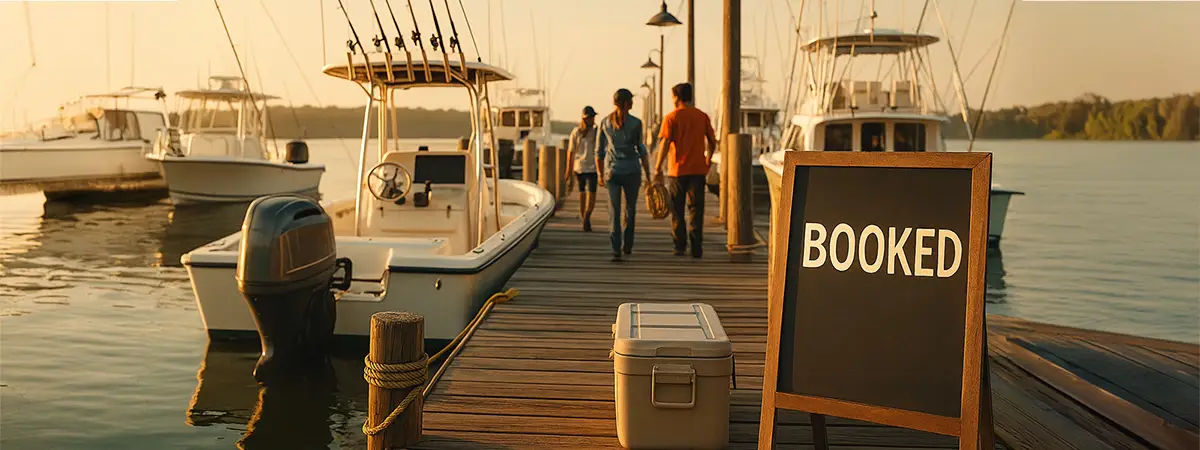
When your season is in full swing, it can feel like all systems go—from sunup to sundown. For some guides, this is the time to stack trips and bank revenue for the year. But even in the busiest months, a little strategic effort can go a long way toward setting up future success.
Here are a few ways to make the most of your peak season:
- Capture content – This is the best time to get fresh photos and videos while the fishing (and the weather) are at their best. These assets will fuel your marketing all year, especially during the off-season.
- Build your email list – Ask every client if they’d like to receive updates or early booking access for next season. A strong email list gives you a direct line when it’s time to fill the calendar again.
- Encourage reviews while the trip is fresh – A quick post-trip text or email with a Google or TripAdvisor link can make all the difference. Happy clients are more likely to leave glowing reviews right after they get off the water.
- Encourage repeat bookings – If someone has a great trip, offer to lock them in for next year before they leave the dock. Even planting the seed can turn into future trips.
- Automate what you can – Whether it’s follow-up emails, online waivers, or reminder texts, the more you can automate during the busy season, the more time you’ll have to focus on your clients and the fishing.
- Run light brand-building ads – Even if you’re booked solid, keeping your name visible through low-budget awareness campaigns (like Google Display or Facebook/Instagram) helps keep the pipeline warm for next season’s planners.
Peak season is when the work gets done—but it’s also your best opportunity to lay the foundation for what comes next.
Off-Season = Prep Season
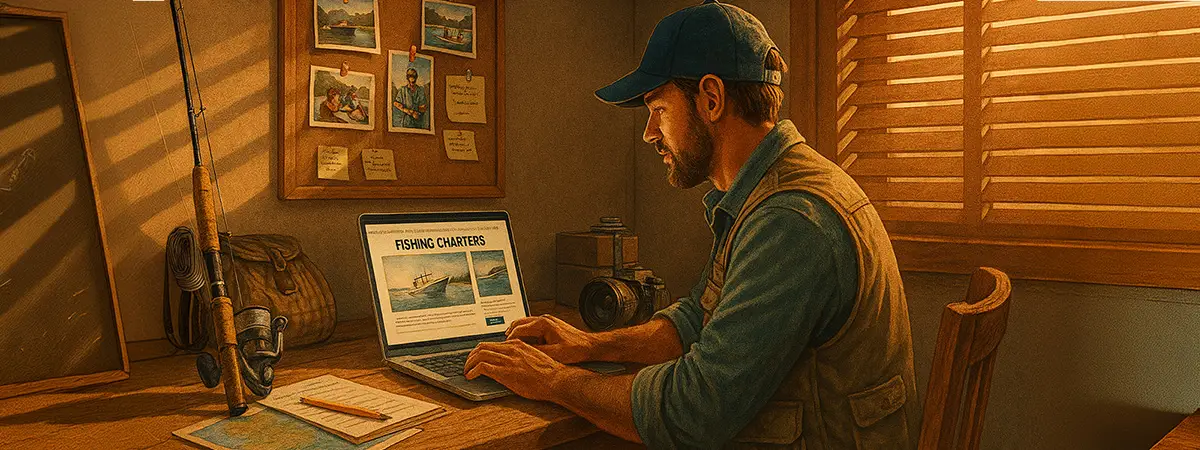
When the rush is over and the rods are racked, it’s tempting to go quiet. And honestly, a little rest is well-earned. But if you treat the off-season as dead time, you’re missing a massive opportunity to set yourself up for the year ahead.
This is when great guides level up—sharpening their brand, streamlining their systems, and preparing to hit the ground running when the season rolls back around.
Here’s how to make the most of your downtime:
- Update your website – Add new photos, refresh trip descriptions, adjust pricing, and clean up anything that’s outdated. If your site needs a rebuild, now’s the time to do it without interrupting bookings.
- Organize your content – Sort through photos and videos, build a library of assets, and plan your content calendar. Having a stash of quality visuals makes marketing way easier later.
- Dial in your messaging – Tweak your trip titles, write better email follow-ups, or finally draft those blog posts you’ve been putting off. (Pro tip: start with one about “What’s biting in [your region] in [upcoming month]” to boost SEO.)
- Request or follow up on reviews – If clients promised to leave a review but didn’t, now’s a great time to send a polite reminder.
- Analyze what worked – Look back at your season. Which trips booked fastest? Which ads converted best? Which blog posts or photos got the most engagement? Use that data to make better decisions going forward.
Off-season doesn’t mean off-duty—it’s just a different kind of grind. The more intentional you are during this window, the smoother your next season will be.
Wrapping It All Up
Seasonality is baked into the charter and guide world—whether you’re bound by weather, fish migrations, or tourism patterns. But the best operators learn to work with it, not against it. By knowing your patterns, preparing ahead of time, and staying active during your off months, you can keep your bookings steady, your business visible, and your calendar full—year after year.
Of course, if you ever need help with marketing, planning, or building your charter’s online presence, we’re here to help—any season, any time!